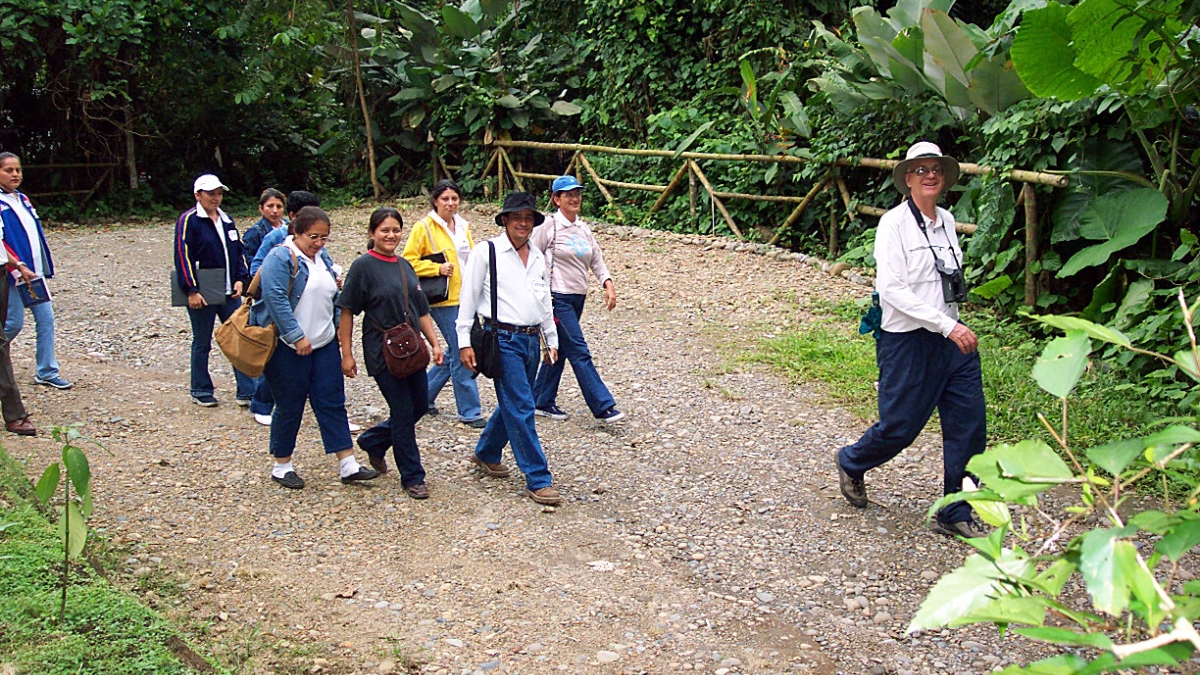ASU researcher leads biodiversity workshops around the world

What’s your favorite animal that currently lives in your country? When asked that question, primary school children from Latin American nations often give answers that include lions, zebras and tigers – all animals that do not live in their countries. To Dave Pearson, a research professor at Arizona State University’s School of Life Sciences, those answers present a problem.
“Without understanding what animals and plants live in their own country, it’s really hard to talk effectively about biodiversity and conservation,” Pearson said.
Pearson holds frequent biodiversity workshops for Latin American children, adults and university students. He started the classes while conducting research in Pucallpa, Peru, for his master’s degree.
“I was invited by my colleagues to share my research techniques,” Pearson said. “Then, they talked to other groups who invited me to do the same.” Over time, he formalized the workshop and focused it more specifically on biodiversity.
For the past 30 years, Pearson has taught these classes around the world to increase awareness about the importance of biodiversity. In mid-July, he will lead another workshop at the Peruvian Amazonian Research Institute in Iquitos, Peru, and teach dozens of university students about sustainable biodiversity and critical-thinking. He hopes these students can help solve ecological issues in their own country.
During the class, Pearson asks the students whether local or global studies are more important for biodiversity. Once students discuss the issue, he introduces elements of critical-thinking and the scientific method. Pearson then asks them to think of questions based on what they observe in their own environment, and work on mini grant proposals based on those questions. This, he said, gives students crucial experience writing research proposals.
“They begin to understand what makes a good study,” Pearson said. “Can the study be done? Is it affordable? What are the potential outcomes? Will it give us information that’s really significant? All those are things they need to understand as far as their future is concerned.”
The workshops are part of a larger plan, however. Pearson also contributes to field guidebooks on native plants and animals, produced in each country’s language. Ultimately, what makes the biggest impact, Pearson said, is letting the people of each country try to solve ecological problems their own way. He states that other conservation efforts have failed because foreign solutions do not work.
“It’s important when I visit other countries that I work with them rather than tell them how things work,” Pearson said. “It’s hard for some people to back off, especially when dealing with those who don’t have access to technology and the latest scientific findings. But these are Peruvian problems with Peruvian solutions, and they know their culture well enough to make the changes their way.”
Pearson notes that changing people’s attitudes about biodiversity and sustainability does not come easily or quickly. He adds that it may take two or three generations before some countries are able to develop their own national conservation identity that includes attributes such as volunteerism, something we take for granted here in the U.S., but is often lacking in many developing countries.
In addition to Peru and Brazil, Pearson has conducted workshops in 11 other countries throughout South America, Asia and Africa. Funding for his work has come from a variety of sources, including grants from organizations such as the National Science Foundation, the World Wildlife Fund and National Geographic Society, as well as profits earned from the field guidebooks.
The School of Life Sciences is an academic unit in ASU's College of Liberal Arts and Sciences.